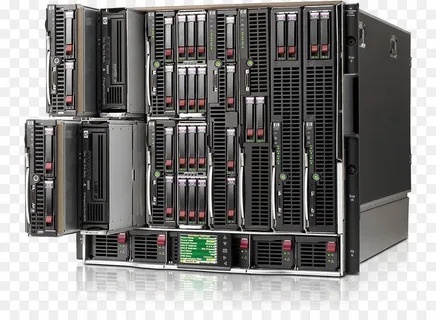Blade servers have emerged as a revolutionary solution for modern businesses seeking to optimize their IT infrastructure. Offering a compact and efficient alternative to traditional rack-mounted servers, blade servers have become increasingly popular due to their versatility, performance, and scalability. In this article, we delve into the various aspects of blade servers and explore how businesses can leverage their potential for achieving success in today's competitive landscape.
Introduction to Blade Servers
Blade servers represent a paradigm shift in server architecture, where multiple server modules, or "blades," are housed within a single chassis. Each blade functions as an independent server unit, equipped with its own processors, memory, storage, and networking components. This modular design allows for significant space savings and simplifies the management of IT infrastructure.
Advantages of Blade Servers
Space Efficiency
One of the primary benefits of blade servers is their compact form factor, which enables businesses to maximize the utilization of data center space. By consolidating multiple servers into a single chassis, organizations can reduce the physical footprint of their IT infrastructure, leading to lower overhead costs and more efficient use of real estate.
Cost-Effectiveness
In addition to space savings, blade servers offer cost advantages through economies of scale. By standardizing hardware components and streamlining maintenance procedures, businesses can achieve cost savings in both upfront investment and long-term operational expenses.
Scalability and Flexibility
Blade servers are highly scalable, allowing businesses to easily expand their computing resources as demand grows. New blade modules can be added to existing chassis without significant disruption to operations, providing the flexibility to adapt to changing business requirements quickly.
Performance and Reliability
Blade servers are designed to deliver high levels of performance and reliability, making them ideal for mission-critical workloads and demanding applications. With advancements in hardware technologies, blade servers offer powerful computing capabilities, enabling businesses to achieve faster processing speeds and improved responsiveness.
Integration with Virtualization
Blade servers seamlessly integrate with virtualization technologies, such as VMware and Hyper-V, enabling businesses to maximize the efficiency of their IT resources. By running multiple virtual machines on a single blade server, organizations can consolidate workloads, optimize resource utilization, and simplify management tasks.
Energy Efficiency and Sustainability
Blade servers are engineered for energy efficiency, consuming less power compared to traditional server architectures. By reducing energy consumption and heat generation, blade servers contribute to lower operating costs and minimize environmental impact, aligning with sustainable business practices.
Security Considerations
Security is a top priority for businesses deploying blade servers, and robust measures are in place to safeguard data and infrastructure. Blade servers feature built-in security features, such as hardware-based encryption and secure management interfaces, to protect against unauthorized access and malicious attacks.
Case Studies of Businesses Leveraging Blade Servers
Numerous businesses across various industries have successfully leveraged blade servers to enhance their IT capabilities and drive business growth. From small startups to large enterprises, organizations have benefited from the agility, performance, and cost-effectiveness of blade server solutions.
Challenges and Limitations
While blade servers offer many advantages, they also present certain challenges and limitations. Initial setup and configuration can be complex, requiring specialized expertise and careful planning. Additionally, businesses may face vendor lock-in concerns when selecting blade server platforms, limiting flexibility and choice.
Future Trends and Innovations
Looking ahead, the future of blade servers is marked by continued innovation and evolution. Emerging trends such as edge computing and software-defined infrastructure are shaping the next generation of blade server technologies, offering new opportunities for businesses to enhance efficiency, agility, and competitiveness.
Conclusion
In conclusion, blade servers represent a powerful tool for businesses seeking to optimize their IT infrastructure and achieve success in today's digital economy. With their compact design, superior performance, and scalability, blade servers offer a compelling solution for meeting the growing demands of modern computing environments. By harnessing the potential of blade servers, businesses can drive innovation, improve agility, and gain a competitive edge in their respective industries.


No comments yet